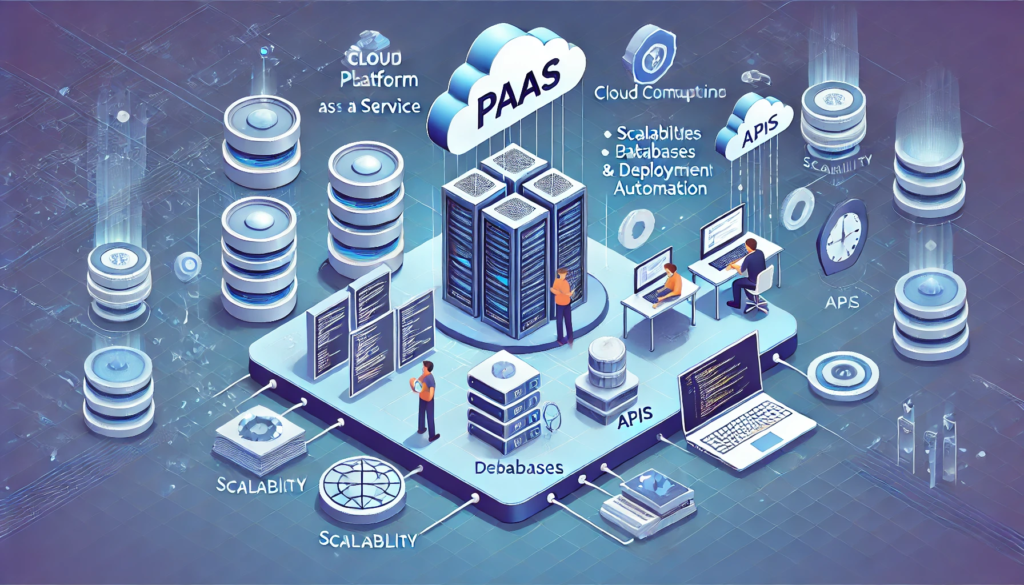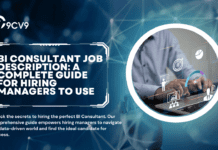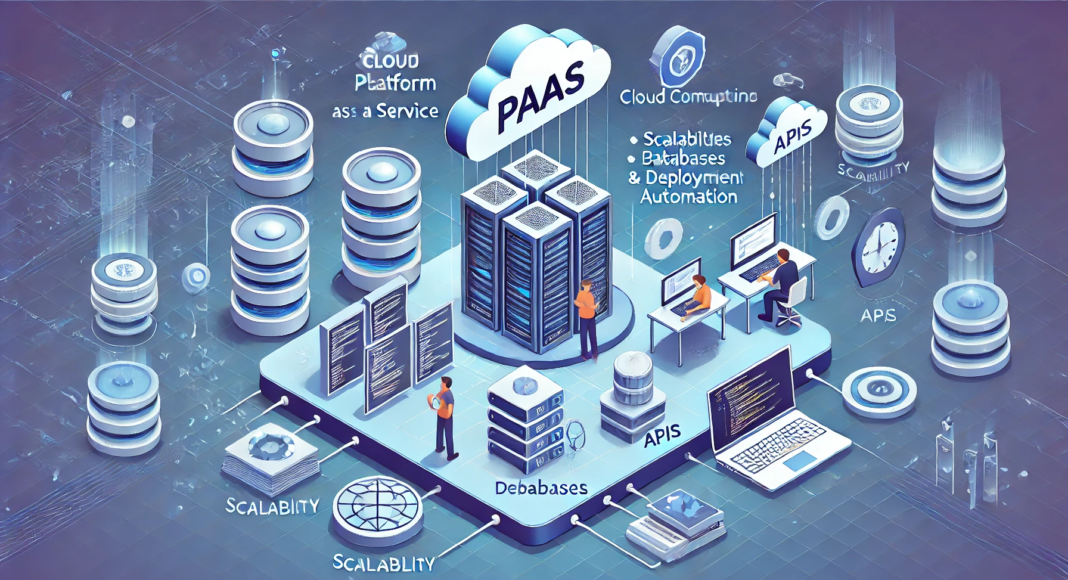Key Takeaways
- Cloud Platform as a Service (PaaS) simplifies application development by providing a fully managed environment with built-in tools, databases, and infrastructure.
- PaaS enables faster deployment, scalability, and cost efficiency, making it ideal for businesses looking to accelerate innovation without managing hardware.
- Future trends in PaaS include AI integration, multi-cloud adoption, and serverless computing, driving greater automation and flexibility in software development.
In today’s fast-evolving digital landscape, businesses and developers are increasingly turning to cloud computing to enhance efficiency, scalability, and cost-effectiveness.
Among the various cloud computing models available, Platform as a Service (PaaS) has emerged as a crucial solution for organizations seeking to streamline application development, deployment, and management.
As companies shift towards cloud-based infrastructures, the demand for PaaS solutionscontinues to grow, providing businesses with powerful tools to accelerate software development while reducing operational complexities.

Cloud Platform as a Service (PaaS) software offers a comprehensive environment for developers to build, test, deploy, and manage applications without the need to invest in and maintain complex hardware or software infrastructure.
Unlike traditional on-premise development, where organizations must set up servers, networking, and databases manually, PaaS provides a fully managed platform that integrates essential development tools, middleware, and infrastructure in a seamless and scalable cloud-based environment.
This enables businesses to focus on innovation and application development rather than infrastructure management, significantly reducing time-to-market and development costs.
One of the key advantages of PaaS software is its ability to facilitate collaboration among development teams. With cloud-based access, developers, IT teams, and stakeholders can work together in real time, enhancing productivity and efficiency.
Additionally, PaaS solutions offer built-in automation, security, and compliance features, ensuring that applications are deployed in a secure and optimized environment.
This is particularly valuable for enterprises looking to scale operations, modernize legacy applications, and leverage emerging technologies such as artificial intelligence (AI), machine learning (ML), and Internet of Things (IoT).
As cloud computing continues to advance, businesses must understand the core functionalities, benefits, and working mechanisms of PaaS software to make informed decisions.
This blog explores the fundamentals of PaaS, how it differs from other cloud service models, its key features, use cases, challenges, and the future of cloud-based platform solutions.
Whether you are a startup, an enterprise, or a developer, understanding what PaaS is and how it works can provide valuable insights into optimizing your software development lifecycle and enhancing business agility in the digital era.
Before we venture further into this article, we would like to share who we are and what we do.
About 9cv9
9cv9 is a business tech startup based in Singapore and Asia, with a strong presence all over the world.
With over nine years of startup and business experience, and being highly involved in connecting with thousands of companies and startups, the 9cv9 team has listed some important learning points in this overview of What is Cloud Platform as a Service (PaaS) Software and How It Works.
If your company needs recruitment and headhunting services to hire top-quality employees, you can use 9cv9 headhunting and recruitment services to hire top talents and candidates. Find out more here, or send over an email to [email protected].
Or just post 1 free job posting here at 9cv9 Hiring Portal in under 10 minutes.
What is Cloud Platform as a Service (PaaS) Software and How It Works
- Understanding Cloud Platform as a Service (PaaS)
- How Cloud PaaS Works
- Benefits of Using Cloud PaaS Software
- Common Use Cases of PaaS Software
- Challenges and Limitations of PaaS Solutions
- Choosing the Right PaaS Solution
- Future Trends in PaaS Technology
1. Understanding Cloud Platform as a Service (PaaS)
Cloud Platform as a Service (PaaS) is a cloud computing model that provides a pre-configured, cloud-based environment where developers can build, test, deploy, and manage applications efficiently. It eliminates the need for organizations to set up and maintain physical infrastructure, allowing them to focus on software development and innovation. PaaS serves as a bridge between Infrastructure as a Service (IaaS) and Software as a Service (SaaS), offering a balance of flexibility, scalability, and automation.
What is PaaS?
- Definition: Platform as a Service (PaaS) is a cloud-based solution that provides a fully managed development environment for building and deploying applications without handling underlying infrastructure.
- How it Works:
- Hosted on cloud servers managed by third-party providers.
- Includes tools for coding, testing, deployment, and scaling.
- Offers built-in automation, security, and integration capabilities.
- Enables seamless collaboration among development teams.
- Key Difference from Other Cloud Models:
- PaaS vs. IaaS: IaaS provides raw infrastructure like virtual machines, storage, and networking, whereas PaaS includes pre-configured tools and services for application development.
- PaaS vs. SaaS: SaaS delivers ready-to-use software to end users, while PaaS offers a development platformfor building and deploying applications.
- Examples of Popular PaaS Providers:
- Google App Engine – A serverless PaaS that supports multiple programming languages.
- Microsoft Azure PaaS – Offers tools for cloud app development, including AI and analytics integrations.
- AWS Elastic Beanstalk – Simplifies web application deployment on AWS infrastructure.
- IBM Cloud Foundry – Provides an open-source platform for developers.
Key Features of PaaS Software
PaaS platforms provide a range of functionalities designed to streamline the software development lifecycle while ensuring scalability and efficiency.
1. Cloud-Based Infrastructure
- PaaS is entirely hosted in the cloud, eliminating the need for on-premise hardware.
- Provides on-demand computing resources, including servers, databases, and networking components.
- Example: AWS Elastic Beanstalk allows developers to deploy applications without managing infrastructure.
2. Development Tools and Frameworks
- Includes pre-configured environments for software development.
- Supports multiple programming languages such as Python, Java, Node.js, Ruby, and PHP.
- Offers code editors, debugging tools, and DevOps integration.
- Example: Google App Engine allows developers to write and deploy code in various programming languages with built-in monitoring and scaling.
3. Automation and Scalability
- Auto-scaling capabilities adjust resources based on traffic and application load.
- Automates software deployment, version control, and patch management.
- Provides container orchestration with tools like Kubernetes for microservices-based applications.
- Example: Microsoft Azure PaaS automatically scales applications to handle fluctuations in user demand.
4. Security and Compliance
- Built-in firewalls, encryption, and identity management for data protection.
- Ensures compliance with industry regulations such as GDPR, HIPAA, and ISO certifications.
- Example: IBM Cloud Foundry offers multi-layered security with data encryption and access controls.
5. Integration with Third-Party Services
- Supports APIs, microservices, and software integrations with third-party applications.
- Compatible with database management systems, AI tools, and analytics software.
- Example: Salesforce PaaS enables seamless CRM integration with custom applications.
How PaaS Helps Businesses and Developers
PaaS is widely adopted by organizations looking to enhance efficiency, reduce development costs, and accelerate product deployment.
1. Faster Application Development
- Provides ready-to-use environments, reducing setup time.
- Automates repetitive tasks such as configuration, testing, and scaling.
- Example: Heroku allows startups to launch applications quickly without worrying about infrastructure management.
2. Cost-Effective Operations
- Eliminates the need for expensive on-premise infrastructure and IT maintenance.
- Pay-as-you-go pricing model ensures organizations only pay for resources they use.
- Example: Google Cloud Run offers a cost-efficient PaaS solution that scales dynamically based on traffic.
3. Enhanced Collaboration and Remote Development
- Enables remote teams to collaborate on application development in real time.
- Provides cloud-based access to development environments from anywhere.
- Example: AWS CodeStar facilitates team collaboration, enabling developers to work on projects seamlessly.
4. Simplified Application Management
- Automates deployment, monitoring, and scaling of applications.
- Reduces the complexity of managing databases, middleware, and runtime environments.
- Example: Red Hat OpenShift offers a fully managed Kubernetes PaaS, simplifying container-based deployments.
Conclusion
Cloud Platform as a Service (PaaS) has transformed the way businesses develop, deploy, and manage applications by providing a scalable, automated, and cost-effective cloud environment. It simplifies infrastructure management, accelerates software development, and enhances collaboration among teams. By leveraging PaaS platforms like AWS, Google Cloud, and Microsoft Azure, businesses can focus on innovation while ensuring secure, high-performance applications. As cloud computing continues to evolve, understanding PaaS software and its capabilities is essential for businesses seeking to stay competitive in an increasingly digital world.
2. How Cloud PaaS Works
Cloud Platform as a Service (PaaS) operates as a cloud-based development and deployment environment, enabling organizations to build, test, and deploy applications without managing complex infrastructure. PaaS provides a fully managed platform, including hardware, software, and development tools, which are accessible via the cloud. It streamlines the software development lifecycle (SDLC) by automating infrastructure provisioning, security, and scaling.
Key Components of Cloud PaaS
PaaS platforms consist of several core components that facilitate seamless development and deployment of applications.
1. Cloud Infrastructure
- PaaS is built on top of Infrastructure as a Service (IaaS), which provides computing, storage, and networking resources.
- Virtualized servers, databases, and networking components are managed by the cloud provider.
- Example: AWS Elastic Beanstalk automatically provisions and configures EC2 instances, load balancers, and databases for application deployment.
2. Application Development Environment
- PaaS offers pre-configured development environments with support for multiple programming languages.
- Includes built-in integrated development environments (IDEs), debugging tools, and version control systems.
- Example: Google App Engine supports Java, Python, PHP, and Node.js, allowing developers to build applications without worrying about infrastructure.
3. Middleware and Runtime Frameworks
- Middleware services such as message queues, APIs, authentication systems, and caching layers simplify application development.
- Provides runtime environments like Node.js, Java Virtual Machine (JVM), and .NET Core for seamless execution of applications.
- Example: Red Hat OpenShift integrates middleware services like Apache Kafka for real-time event streaming.
4. Database Management and Storage
- PaaS includes managed databases, ensuring high availability and automatic backups.
- Supports SQL and NoSQL databases, along with object storage for application data.
- Example: Microsoft Azure SQL Database provides an auto-scaling, fully managed database solution for PaaS applications.
5. Deployment and Automation Tools
- Automates CI/CD (Continuous Integration and Continuous Deployment) pipelines.
- Enables one-click deployment, rollback mechanisms, and automated monitoring.
- Example: Heroku offers Git-based deployment, allowing developers to push code updates seamlessly.
6. Security and Compliance
- PaaS platforms come with built-in firewalls, encryption, and access controls.
- Ensures compliance with industry standards like GDPR, HIPAA, and ISO 27001.
- Example: IBM Cloud Foundry provides enterprise-grade security with encryption, identity access management (IAM), and DDoS protection.
Step-by-Step Process: How Cloud PaaS Works
1. Accessing the PaaS Platform
- Developers sign up for a PaaS subscription with providers like AWS, Google Cloud, or Microsoft Azure.
- Cloud providers offer a web-based dashboard or API for accessing development environments.
- Example: Developers can log into Google Cloud Console to configure their App Engine environment.
2. Selecting a Development Stack
- Users choose their preferred programming language, frameworks, and databases.
- PaaS supports Java, Python, Ruby, Node.js, .NET, and more.
- Example: A team developing an AI application may select Python with TensorFlow on Google App Engine.
3. Building the Application
- Developers write, test, and debug code using the cloud-based IDE.
- PaaS integrates with Git repositories, version control, and collaboration tools.
- Example: Heroku allows developers to use GitHub integration for smooth code management.
4. Deploying the Application
- Applications are deployed via one-click deployment, Git push, or automated CI/CD pipelines.
- PaaS handles server provisioning, containerization, and scaling.
- Example: AWS Elastic Beanstalk deploys applications automatically while configuring the necessary infrastructure.
5. Managing and Scaling Applications
- Auto-scaling adjusts resources based on traffic and performance needs.
- Developers monitor application performance using logging and analytics tools.
- Example: Microsoft Azure App Service scales applications dynamically based on user demand.
6. Continuous Monitoring and Optimization
- PaaS platforms provide real-time monitoring, performance analytics, and security auditing.
- Automatic updates ensure applications run on the latest software versions.
- Example: Google App Engine offers built-in monitoring and debugging tools through Cloud Logging and Cloud Trace.
Real-World Use Cases of PaaS
1. Web Application Development
- PaaS simplifies web and mobile app development, reducing infrastructure overhead.
- Example: Shopify uses PaaS solutions to host and manage its e-commerce platform, enabling businesses to sell online without handling backend infrastructure.
2. AI and Machine Learning Applications
- PaaS provides built-in AI and ML tools for training and deploying models.
- Example: Google AI Platform allows developers to train machine learning models without managing hardware resources.
3. Internet of Things (IoT) Solutions
- PaaS integrates with IoT devices, real-time analytics, and cloud-based data storage.
- Example: Microsoft Azure IoT Hub provides a PaaS solution for managing connected devices and real-time telemetry data.
4. Enterprise Resource Planning (ERP) Systems
- Businesses use PaaS to host ERP and CRM systems with scalability and security.
- Example: Salesforce App Cloud is a leading PaaS-based CRM solution.
5. Blockchain and Fintech Applications
- PaaS platforms offer blockchain-as-a-service (BaaS) for developing secure and scalable blockchain applications.
- Example: IBM Blockchain Platform allows enterprises to build and manage blockchain networks on a PaaS infrastructure.
Benefits of PaaS in Application Development
1. Faster Development and Deployment
- Pre-configured environments eliminate manual infrastructure setup.
- Automated CI/CD pipelines speed up software delivery.
- Example: Google App Engine automatically handles server provisioning, allowing faster deployment.
2. Cost Savings
- Pay-as-you-go pricing ensures businesses only pay for used resources.
- Reduces hardware costs, IT maintenance, and software licensing fees.
- Example: AWS Elastic Beanstalk provides cost-efficient cloud resources without upfront investments.
3. High Availability and Reliability
- PaaS providers offer redundant infrastructure, load balancing, and disaster recovery.
- Ensures 99.9% uptime for applications.
- Example: Azure PaaS services include built-in high-availability zones and failover mechanisms.
4. Simplified Security and Compliance
- Built-in security tools ensure compliance with industry regulations.
- Provides encryption, identity management, and automated backups.
- Example: IBM Cloud Foundry includes enterprise-grade security with role-based access controls.
5. Seamless Integration with Other Cloud Services
- Connects easily with AI, IoT, analytics, and big data solutions.
- Enhances functionality with APIs, microservices, and cloud-native architectures.
- Example: Google Cloud Run integrates with BigQuery and Cloud AI for real-time analytics.
Conclusion
Cloud Platform as a Service (PaaS) provides a fully managed, scalable, and cost-effective environment for application development and deployment. By automating infrastructure provisioning, security, and scaling, PaaS accelerates software development and enables businesses to focus on innovation. With leading PaaS solutions such as AWS Elastic Beanstalk, Google App Engine, and Microsoft Azure App Services, organizations can build and deploy applications efficiently while reducing operational complexities. Understanding how PaaS works is essential for companies looking to modernize their IT infrastructure and stay competitive in the digital era.
3. Benefits of Using Cloud PaaS Software
Cloud Platform as a Service (PaaS) offers businesses and developers a scalable, cost-effective, and efficient solution for building, deploying, and managing applications. By eliminating the complexities of infrastructure management, PaaS enables organizations to focus on development, innovation, and business growth. Below are the key benefits of using Cloud PaaS software, with real-world examples illustrating its advantages.
1. Faster Application Development and Deployment
- Pre-configured development environments eliminate the need to manually set up infrastructure, reducing setup time.
- Built-in software development kits (SDKs), frameworks, and APIs accelerate the coding process.
- Automated CI/CD pipelines streamline deployment, testing, and updates.
- Developers can write code, test, and deploy applications faster without dealing with hardware constraints.
Example:
- Google App Engine allows developers to quickly deploy applications without setting up servers, significantly reducing time-to-market.
- Heroku provides a Git-based deployment system, enabling continuous deployment and automatic updates.
2. Reduced Infrastructure and Maintenance Costs
- PaaS operates on a pay-as-you-go model, eliminating the need for upfront infrastructure investments.
- No need to purchase or maintain physical servers, databases, or networking equipment.
- Cloud providers handle server maintenance, security updates, and patch management, reducing IT overhead.
- Optimized resource allocation and auto-scaling minimize wasted computing power.
Example:
- AWS Elastic Beanstalk automatically provisions the required infrastructure, optimizing resource utilization and reducing operational costs.
- Microsoft Azure App Services provides a fully managed hosting environment, eliminating the need for in-house infrastructure management.
3. Scalability and Flexibility
- PaaS platforms offer auto-scaling features, allowing applications to handle increased traffic without performance degradation.
- Businesses can scale resources up or down based on demand without requiring manual intervention.
- Supports multi-cloud and hybrid cloud deployments for greater flexibility.
- Developers can switch between different programming languages and frameworks without reconfiguring infrastructure.
Example:
- Google Cloud Run dynamically scales applications based on demand, ensuring optimal performance.
- Red Hat OpenShift supports Kubernetes-based containerized applications, making it easier to scale workloads across multiple environments.
4. Enhanced Collaboration and Remote Accessibility
- PaaS provides cloud-based development environments, enabling teams to work from anywhere.
- Multiple developers can collaborate on the same project using built-in version control systems.
- Integrated developer tools, APIs, and databases make it easier to manage distributed teams.
- Supports real-time code sharing, feedback, and troubleshooting, improving productivity.
Example:
- GitHub Codespaces (a cloud-based IDE powered by Microsoft Azure) allows developers to code and collaborate remotely.
- Salesforce App Cloud enables teams to build and deploy applications across different locations with seamless integration.
5. High Availability and Reliability
- Cloud PaaS providers ensure 99.9% uptime, minimizing application downtime.
- Built-in load balancing and failover mechanisms distribute traffic efficiently.
- Redundant storage and disaster recovery features protect against data loss.
- PaaS providers handle automatic backups and recovery, ensuring business continuity.
Example:
- IBM Cloud Foundry offers built-in failover capabilities, ensuring applications remain accessible even in case of hardware failure.
- AWS Lambda ensures high availability by distributing workloads across multiple availability zones.
6. Improved Security and Compliance
- PaaS providers implement robust security measures, including data encryption, firewalls, and identity access management (IAM).
- Compliance with GDPR, HIPAA, ISO 27001, and SOC 2 standards ensures data protection.
- Automated security updates and patch management protect against vulnerabilities.
- Multi-factor authentication (MFA) and role-based access controls (RBAC) enhance user security.
Example:
- Microsoft Azure PaaS services offer built-in DDoS protection and threat detection.
- IBM Cloud Pak for Applications provides enterprise-grade security with encryption and compliance support.
7. Seamless Integration with Other Cloud Services
- PaaS platforms integrate with AI, IoT, big data analytics, and third-party APIs, enhancing application functionality.
- Supports cloud-native architectures such as microservices and serverless computing.
- Businesses can connect applications with CRM, ERP, and analytics platforms effortlessly.
Example:
- Google Cloud AI Platform integrates with Google BigQuery for real-time data processing.
- Amazon API Gateway allows seamless integration between PaaS applications and third-party services.
8. Automated Performance Monitoring and Analytics
- PaaS platforms include built-in monitoring tools that provide real-time insights into application performance.
- Log management, tracing, and alerting features help identify and resolve issues quickly.
- Developers can track CPU usage, memory consumption, and network latency through visual dashboards.
- AI-driven predictive analytics optimize application performance and resource allocation.
Example:
- Google Stackdriver (Cloud Operations) provides monitoring, logging, and error reporting for PaaS applications.
- AWS CloudWatch tracks application performance and triggers alerts based on predefined thresholds.
9. Simplified Application Lifecycle Management
- PaaS facilitates continuous integration and continuous deployment (CI/CD), reducing development bottlenecks.
- Enables automated testing, debugging, and version control within the platform.
- Containerization and microservices support make it easier to deploy, update, and scale applications.
Example:
- Heroku Pipelines automates the build, test, and release process, simplifying application lifecycle management.
- Azure DevOps Services provides an end-to-end CI/CD pipeline for faster deployments.
10. Environmental Sustainability
- Cloud PaaS providers optimize energy consumption and resource utilization, reducing carbon footprint.
- Businesses consume only what they need, avoiding energy wastage.
- Providers use energy-efficient data centers powered by renewable energy.
Example:
- Google Cloud is carbon-neutral and operates on 100% renewable energy.
- Microsoft Azure Sustainability Calculator helps organizations measure and reduce their cloud carbon footprint.
Conclusion
Cloud Platform as a Service (PaaS) offers a scalable, secure, and cost-effective solution for modern application development. By automating infrastructure management, streamlining deployment, and providing built-in security, PaaS platforms empower businesses to focus on innovation rather than IT complexities. With leading PaaS solutions such as AWS Elastic Beanstalk, Google App Engine, Microsoft Azure App Services, and IBM Cloud Foundry, organizations can develop, scale, and maintain applications effortlessly.
Embracing Cloud PaaS software is essential for businesses, startups, and enterprises aiming to achieve agility, operational efficiency, and competitive advantage in today’s digital-first economy.
4. Common Use Cases of PaaS Software
Platform as a Service (PaaS) software is widely adopted across industries due to its scalability, automation, and flexibility in application development and deployment. It enables businesses, developers, and organizations to build, test, and run applications without managing the underlying infrastructure. Below are the most common use cases of PaaS software, along with real-world examples illustrating its effectiveness.
1. Web Application Development and Hosting
- PaaS platforms provide a pre-configured environment for building, testing, and deploying web applications.
- Developers can focus on writing code while the platform handles scalability, security, and hosting.
- Includes support for multiple programming languages such as Python, Java, Ruby, PHP, and Node.js.
- Features like auto-scaling, load balancing, and integrated databases ensure seamless performance.
Example:
- Google App Engine allows developers to deploy web applications without managing servers.
- Heroku supports rapid web application development with one-click deployment and auto-scaling.
2. Mobile Application Development
- PaaS simplifies backend development for mobile applications by offering database management, authentication, and API integration.
- Provides cross-platform development frameworks, allowing apps to be built for iOS and Android simultaneously.
- Ensures real-time synchronization, push notifications, and cloud storage for mobile apps.
- Supports serverless functions to execute backend tasks without managing servers.
Example:
- AWS Amplify provides a backend-as-a-service (BaaS) solution for mobile and web apps.
- Google Firebase offers a fully managed backend, including authentication, real-time database, and cloud messaging.
3. Enterprise Software Development
- PaaS platforms help businesses develop and deploy custom enterprise applications for internal operations, HR, CRM, and ERP.
- Provides high availability, compliance, and security features for sensitive enterprise data.
- Supports integration with existing enterprise systems like SAP, Microsoft Dynamics, and Oracle ERP.
Example:
- Salesforce App Cloud enables businesses to build custom CRM applications tailored to their needs.
- IBM Cloud Foundry supports enterprise-grade applications with built-in security and compliance controls.
4. Internet of Things (IoT) Applications
- PaaS platforms offer IoT-specific services, including data collection, analytics, and real-time processing.
- Provides edge computing support, enabling IoT devices to process data locally before sending it to the cloud.
- Ensures scalability to handle massive IoT deployments across industries.
Example:
- Microsoft Azure IoT Suite allows businesses to connect and monitor IoT devices.
- Google Cloud IoT Core helps manage and analyze data from IoT devices in real time.
5. Artificial Intelligence (AI) and Machine Learning (ML) Models
- PaaS simplifies AI/ML model development, training, and deployment with built-in frameworks and tools.
- Supports automated model training, hyperparameter tuning, and real-time inference.
- Provides access to GPU/TPU acceleration for faster processing.
- Facilitates integration of AI-powered chatbots, image recognition, and predictive analytics into applications.
Example:
- Google AI Platform enables developers to build and deploy ML models using TensorFlow and PyTorch.
- AWS SageMaker provides an end-to-end platform for machine learning model training and deployment.
6. Big Data Analytics and Data Processing
- PaaS platforms offer scalable big data processing with built-in tools for ETL (Extract, Transform, Load), data warehousing, and visualization.
- Enables businesses to analyze large datasets in real-time for decision-making.
- Provides integration with business intelligence (BI) tools like Power BI, Tableau, and Looker.
Example:
- Google BigQuery enables organizations to run large-scale analytics on massive datasets.
- AWS Redshift provides a fully managed data warehouse for processing and analyzing structured data.
7. DevOps and Continuous Integration/Continuous Deployment (CI/CD)
- PaaS enables automated software testing, version control, and deployment through CI/CD pipelines.
- Offers containerization and microservices support, simplifying application deployment.
- Ensures rapid code iteration, rollback, and updates without downtime.
- Integrates with DevOps tools like Jenkins, GitHub Actions, and Azure DevOps.
Example:
- Heroku Pipelines automates deployment from development to production in a single workflow.
- AWS CodePipeline enables continuous integration and deployment for cloud applications.
8. E-commerce and Digital Marketplace Development
- PaaS provides a scalable infrastructure for hosting online stores, marketplaces, and e-commerce platforms.
- Includes built-in payment gateways, product catalogs, and customer management features.
- Ensures high availability, real-time inventory tracking, and secure transactions.
Example:
- Shopify Plus (a PaaS e-commerce solution) allows businesses to scale their online stores effortlessly.
- Magento Commerce Cloud provides a cloud-based platform for enterprise e-commerce solutions.
9. Video Streaming and Media Processing
- PaaS solutions support on-demand and live video streaming with high-speed content delivery.
- Ensures content encoding, compression, and adaptive bitrate streaming for optimized performance.
- Includes integration with CDNs (Content Delivery Networks) for seamless video playback.
Example:
- AWS Elemental Media Services powers video streaming platforms like Netflix and Twitch.
- Google Cloud Video Intelligence automates media processing with AI-based tagging and analytics.
10. Gaming Application Development
- PaaS provides a cloud-based gaming backend, ensuring real-time multiplayer functionality, matchmaking, and leaderboards.
- Supports scalable game servers to handle peak traffic.
- Offers AI-driven player analytics and in-game monetization tools.
Example:
- Google Cloud Game Servers provides a fully managed environment for online gaming.
- Amazon GameLift enables developers to deploy, scale, and manage multiplayer game servers.
11. Blockchain and Decentralized Applications (DApps)
- PaaS platforms simplify blockchain development by providing managed blockchain networks and smart contract deployment.
- Supports integration with Ethereum, Hyperledger Fabric, and other blockchain frameworks.
- Enables businesses to build secure, decentralized applications (DApps).
Example:
- IBM Blockchain Platform allows enterprises to create and manage blockchain networks.
- Azure Blockchain Service provides a fully managed ledger platform for secure transactions.
12. Smart City and Government Applications
- PaaS enables smart city solutions for traffic management, public safety, and environmental monitoring.
- Helps governments deploy citizen engagement platforms, cloud-based public services, and IoT-enabled infrastructure.
- Provides data analytics for urban planning and decision-making.
Example:
- Microsoft Azure Smart City Solutions support smart infrastructure for urban development.
- AWS GovCloud provides a secure platform for hosting government applications.
Conclusion
PaaS software plays a crucial role across various industries and applications, enabling organizations to build, deploy, and manage applications efficiently and cost-effectively. Whether for web and mobile app development, AI/ML, IoT, big data analytics, or blockchain applications, PaaS provides a scalable and automated environment that streamlines development and deployment.
By leveraging leading PaaS solutions such as AWS, Google Cloud, Microsoft Azure, and IBM Cloud, businesses can accelerate innovation, optimize costs, and enhance security and scalability in their digital transformation journey.
5. Challenges and Limitations of PaaS Solutions
Platform as a Service (PaaS) solutions offer numerous benefits, including scalability, automation, and streamlined application development. However, they also come with challenges and limitations that organizations must consider before adoption. These challenges can impact security, performance, customization, integration, and cost management. Understanding these limitations is essential for businesses to make informed decisions about using PaaS solutions effectively.
1. Vendor Lock-in and Limited Portability
- Many PaaS solutions are proprietary, making it difficult to migrate applications to another provider.
- Organizations become dependent on specific APIs, tools, and programming frameworks offered by the PaaS provider.
- Moving applications from one cloud PaaS to another can involve significant redevelopment efforts.
- Differences in database management, storage systems, and security protocols across providers create integration challenges.
Example:
- Applications developed using Google App Engine may require significant modifications to migrate to AWS Lambda or Microsoft Azure Functions.
2. Security and Compliance Risks
- PaaS solutions store data and applications on third-party cloud infrastructure, which may pose security risks.
- Enterprises handling sensitive data (e.g., healthcare, finance, government) must ensure compliance with GDPR, HIPAA, PCI-DSS, and SOC 2.
- Multi-tenancy in PaaS environments increases the risk of data breaches and cyberattacks.
- Security configurations and access controls vary across providers, requiring additional monitoring and auditing.
Example:
- Financial institutions using PaaS for banking applications must ensure compliance with regulatory frameworks like PCI-DSS to protect payment transactions.
3. Limited Customization and Flexibility
- PaaS platforms offer pre-configured environments that may restrict customization based on business needs.
- Developers have limited control over server configurations, network settings, and backend optimizations.
- Some PaaS providers enforce predefined software stacks, restricting the use of specific development tools and libraries.
- Custom workflows and integrations may require workarounds or additional services, increasing complexity.
Example:
- A company using AWS Elastic Beanstalk may find it challenging to fine-tune server configurations, database performance, or network settings compared to a self-managed solution.
4. Performance and Latency Issues
- PaaS platforms are shared environments, meaning applications might experience resource contention during high traffic periods.
- Businesses relying on real-time processing or low-latency operations may face network delays.
- Performance tuning is limited since providers control underlying infrastructure, storage, and database optimization.
- Applications with high computing needs (e.g., AI/ML, video streaming, gaming) may struggle with latency issues.
Example:
- A gaming company using Google Cloud PaaS for multiplayer servers may experience delays during peak gaming hours due to shared cloud infrastructure limitations.
5. Integration Challenges with Existing Systems
- Enterprises using on-premises databases, legacy applications, or multi-cloud strategies may struggle to integrate with PaaS environments.
- Some PaaS platforms provide limited support for hybrid cloud architectures, making integration complex.
- Compatibility issues arise when connecting third-party APIs, enterprise resource planning (ERP), and customer relationship management (CRM) systems.
Example:
- A manufacturing company using SAP ERP on-premises may find it difficult to integrate real-time data processing with a cloud-based PaaS solution.
6. Unexpected Costs and Pricing Complexity
- PaaS solutions operate on pay-as-you-go models, making cost prediction difficult.
- Businesses may face unexpected charges for additional services such as storage, data transfers, monitoring, and API calls.
- Scaling applications may increase costs exponentially, especially for high-performance computing workloads.
- Pricing structures vary between providers, making cost comparison and budgeting challenging.
Example:
- A startup using AWS PaaS for mobile app development may initially benefit from free-tier resources but experience unexpected cost spikes due to increased database transactions and API requests.
7. Data Governance and Sovereignty Concerns
- PaaS providers store data across multiple geographic regions, raising data sovereignty issues for companies subject to local data laws.
- Businesses operating in multiple jurisdictions must ensure compliance with local regulations regarding data storage and transfer.
- Some providers lack fine-grained control over data residency, leading to legal and compliance risks.
Example:
- A European company using a U.S.-based PaaS provider may face GDPR compliance challenges if customer data is stored in non-EU data centers.
8. Limited Control Over Infrastructure and Downtime Risks
- Businesses have minimal control over server management, hardware configurations, and networking in a PaaS environment.
- If the PaaS provider experiences outages, businesses face downtime and disruptions.
- Service-level agreements (SLAs) may not always guarantee 100% uptime, impacting mission-critical applications.
- Debugging infrastructure-level failures is challenging since organizations do not have direct access to server logs or networking tools.
Example:
- When AWS Elastic Beanstalk experienced downtime, several businesses relying on the service suffered disruptions in their web applications.
9. Vendor Ecosystem Limitations
- Some PaaS providers may have limited third-party integrations, plugins, or extensions, restricting flexibility.
- Organizations using specific development tools, frameworks, or AI/ML models may find compatibility issues with certain PaaS platforms.
- Businesses must assess whether the PaaS ecosystem aligns with their software development and IT infrastructure.
Example:
- Developers using Google Cloud PaaS may find it difficult to use Microsoft-specific development tools like .NET or Azure DevOps without additional configurations.
10. Compliance with Industry-Specific Regulations
- Some industries have strict regulations that PaaS providers may not fully support, requiring additional compliance measures.
- Healthcare, finance, and government sectors need advanced data encryption, audit logs, and security certifications.
- Certain PaaS solutions may not meet specific regulatory standards, requiring businesses to implement custom compliance frameworks.
Example:
- A healthcare company using PaaS for patient data processing must ensure that the platform complies with HIPAA regulations.
Conclusion
While PaaS solutions offer significant advantages in application development, deployment, and scalability, they also come with challenges related to vendor lock-in, security, customization, integration, costs, and compliance. Organizations must carefully evaluate their business needs, regulatory requirements, and performance expectationsbefore selecting a PaaS provider.
By implementing robust security measures, cost management strategies, and hybrid cloud architectures, businesses can mitigate PaaS limitations and fully leverage cloud-based application development.
6. Choosing the Right PaaS Solution
Selecting the right Platform as a Service (PaaS) solution is a critical decision for businesses looking to streamline application development, deployment, and scalability. With numerous PaaS providers in the market, organizations must evaluate various factors, including features, pricing, security, integration, and compliance requirements. Choosing the wrong PaaS platform can lead to vendor lock-in, unexpected costs, performance limitations, and security vulnerabilities.
Below is a detailed guide on the key considerations when selecting the right PaaS solution.
1. Assessing Business and Development Needs
Before choosing a PaaS provider, organizations must evaluate their specific business requirements and development goals.
- Identify whether the PaaS solution will be used for web application development, mobile app development, AI/ML workloads, or big data processing.
- Consider the required programming languages, frameworks, and tools (e.g., Java, Python, .NET, Node.js).
- Determine whether the solution needs to support multi-cloud, hybrid cloud, or on-premises environments.
- Assess expected workload scalability and traffic demand.
Example:
- A fintech company developing secure banking applications may require a PaaS platform with strong compliance certifications such as PCI-DSS and SOC 2.
2. Evaluating Key Features and Capabilities
A reliable PaaS platform should offer robust development, deployment, and management tools.
- Look for built-in support for continuous integration and continuous deployment (CI/CD) pipelines.
- Ensure availability of auto-scaling, monitoring, and logging tools.
- Check for database management, serverless computing, and microservices support.
- Assess the platform’s ability to automate infrastructure provisioning and deployment.
Example:
- Google Cloud PaaS (App Engine) provides auto-scaling and seamless integration with Kubernetes for containerized applications.
3. Comparing Security and Compliance Standards
Security is a major concern when choosing a PaaS provider, especially for businesses handling sensitive customer data.
- Look for data encryption (both in transit and at rest).
- Evaluate the provider’s access control mechanisms (e.g., role-based access control (RBAC), multi-factor authentication (MFA)).
- Ensure the platform complies with industry-specific regulations such as:
- HIPAA (for healthcare applications)
- GDPR (for European user data protection)
- SOC 2 & ISO 27001 (for cloud security best practices)
- Check whether the provider offers disaster recovery and data backup features.
Example:
- A healthcare startup using AWS PaaS (Elastic Beanstalk) must ensure that the platform is HIPAA-compliant to securely store patient records.
4. Ensuring Scalability and Performance
The right PaaS solution should support business growth and high traffic demand without performance degradation.
- Choose a provider with automatic scaling capabilities to handle fluctuating workloads.
- Look for multi-region support to ensure low-latency performance.
- Evaluate the provider’s service-level agreements (SLAs) for uptime guarantees (e.g., 99.99% availability).
- Check whether the platform supports load balancing and caching mechanisms.
Example:
- An e-commerce business preparing for Black Friday sales should opt for a PaaS platform with auto-scaling and high availability zones to handle sudden traffic surges.
5. Reviewing Integration and Compatibility
A good PaaS platform should integrate seamlessly with existing systems, third-party APIs, and DevOps tools.
- Ensure compatibility with on-premises databases and legacy applications.
- Look for pre-built integrations with popular DevOps tools like GitHub, Jenkins, and Docker.
- Check if the platform supports multi-cloud and hybrid cloud deployments.
- Evaluate whether the PaaS solution offers APIs and SDKs for custom integrations.
Example:
- A logistics company using Microsoft Azure PaaS may require seamless integration with SAP ERP for real-time shipment tracking.
6. Assessing Vendor Lock-in Risks
One of the biggest challenges with PaaS solutions is vendor lock-in, which makes it difficult to migrate applications to another provider.
- Choose a provider that supports open standards and containerized deployments.
- Look for multi-cloud capabilities to avoid dependence on a single vendor.
- Opt for platforms that use standard programming languages and frameworks to simplify migration.
- Assess whether the PaaS provider supports data portability and export features.
Example:
- A SaaS company developing applications on AWS Lambda (serverless PaaS) may face challenges migrating to Google Cloud Functions due to differences in function triggers and runtime environments.
7. Understanding Pricing and Cost Management
PaaS pricing structures can be complex, and businesses should ensure they understand billing models and cost optimization options.
- Compare pricing models: pay-as-you-go, reserved instances, or subscription-based pricing.
- Identify potential hidden costs, such as data transfer fees, API requests, and storage costs.
- Check whether the provider offers cost monitoring tools and budget alerts.
- Look for free-tier options or trial plans to test the platform before full-scale deployment.
Example:
- A startup using Heroku PaaS may benefit from the free tier initially but could face higher operational costs as the application scales.
8. Evaluating Customer Support and Documentation
Reliable customer support is essential for troubleshooting issues and ensuring smooth operations.
- Check whether the provider offers 24/7 technical support.
- Look for community forums, detailed documentation, and knowledge bases.
- Evaluate the availability of dedicated account managers or enterprise support plans.
- Consider SLA-backed support guarantees for critical applications.
Example:
- An enterprise using Red Hat OpenShift PaaS may require a dedicated support plan to manage Kubernetes-based deployments efficiently.
9. Comparing Leading PaaS Providers
There are several major PaaS providers in the market, each with unique features and benefits. Businesses should compare them based on scalability, security, pricing, and compatibility.
Popular PaaS Providers
- Amazon Web Services (AWS Elastic Beanstalk) – Best for scalability and enterprise applications.
- Microsoft Azure App Services – Ideal for integrating with Windows-based applications.
- Google Cloud Platform (App Engine) – Suitable for AI/ML applications and containerized deployments.
- IBM Cloud Foundry – Best for multi-cloud and hybrid cloud support.
- Red Hat OpenShift – Ideal for Kubernetes-based application development.
- Heroku – Popular among startups and small businesses for web and mobile apps.
Conclusion
Choosing the right PaaS solution requires a comprehensive evaluation of business needs, security, scalability, integration, pricing, and vendor lock-in risks. Businesses should conduct thorough research, test different platforms, and ensure that the selected PaaS provider aligns with their long-term goals.
By considering security compliance, workload performance, cost efficiency, and multi-cloud support, organizations can maximize the benefits of PaaS while mitigating potential challenges.
7. Future Trends in PaaS Technology
Platform as a Service (PaaS) is rapidly evolving, driven by advancements in cloud computing, artificial intelligence, automation, and security. As businesses seek greater efficiency, scalability, and agility, the PaaS landscape is expected to undergo significant transformations in the coming years.
This section explores the future trends shaping PaaS technology, with insights into emerging innovations, industry shifts, and their impact on businesses.
1. Increased Adoption of AI and Machine Learning in PaaS
Artificial Intelligence (AI) and Machine Learning (ML) are playing a critical role in automating and optimizing cloud-based application development.
- PaaS platforms are integrating AI-driven code generation, error detection, and performance monitoring tools.
- AI-powered chatbots and virtual assistants are enhancing developer productivity by providing real-time recommendations.
- Predictive analytics and self-healing capabilities are improving application reliability and uptime.
- Automated AI model training and deployment will make it easier for businesses to integrate machine learning into applications.
Example:
- Google Cloud AI Platform provides a PaaS environment for ML model training, deployment, and real-time analytics, helping businesses build AI-powered applications without extensive expertise.
2. Rise of Multi-Cloud and Hybrid Cloud PaaS Solutions
Businesses are increasingly adopting multi-cloud and hybrid cloud strategies to enhance flexibility, security, and cost-efficiency.
- Multi-cloud PaaS solutions allow businesses to deploy applications across multiple cloud providers, reducing vendor lock-in.
- Hybrid cloud PaaS enables seamless integration between on-premises infrastructure and public cloud services.
- Cloud providers are developing cross-platform compatibility to ensure interoperability across different cloud environments.
- More organizations are leveraging cloud-agnostic PaaS tools to maintain control over data and applications.
Example:
- Red Hat OpenShift provides a hybrid PaaS platform that allows businesses to deploy applications on AWS, Azure, Google Cloud, or private data centers.
3. Serverless Computing and Function-as-a-Service (FaaS) Expansion
The adoption of serverless computing within PaaS environments is growing, enabling developers to focus on code rather than infrastructure management.
- PaaS providers are expanding support for Function-as-a-Service (FaaS) to run applications without provisioning or managing servers.
- Serverless PaaS solutions allow event-driven execution, reducing computing costs for applications with fluctuating workloads.
- Enhanced auto-scaling capabilities are improving resource efficiency and cost savings.
- More businesses are adopting serverless architectures for microservices and API-driven applications.
Example:
- AWS Lambda is a leading serverless PaaS solution that executes code only when triggered, optimizing cloud resource usage and costs.
4. Enhanced Security and Compliance Measures
As cyber threats become more sophisticated, PaaS providers are prioritizing security enhancements to protect applications and data.
- AI-powered threat detection and real-time anomaly monitoring are being integrated into PaaS platforms.
- Automated security patching and compliance auditing will reduce vulnerabilities in cloud applications.
- More PaaS providers are adopting Zero Trust Security models to prevent unauthorized access.
- Regulations like GDPR, HIPAA, and ISO 27001 are driving built-in compliance management tools.
Example:
- Microsoft Azure PaaS offers Azure Security Center, which provides AI-driven security insights, vulnerability assessments, and compliance monitoring for cloud applications.
5. Low-Code and No-Code PaaS Platforms Gaining Popularity
Low-code and no-code development platforms are becoming integral to PaaS solutions, allowing business users and non-developers to build applications with minimal coding expertise.
- No-code PaaS solutions enable drag-and-drop interfaces for building applications quickly.
- Businesses are using low-code automation tools to accelerate digital transformation efforts.
- AI-assisted development will further simplify app design and customization.
- Companies are leveraging low-code PaaS for workflow automation, CRM, and business intelligence applications.
Example:
- Salesforce Lightning PaaS provides a low-code platform that enables businesses to create and deploy enterprise applications with minimal coding.
6. Integration of Edge Computing in PaaS
With the rise of IoT and real-time data processing, edge computing is becoming a key component of PaaS architectures.
- Edge-enabled PaaS solutions allow applications to process data closer to the source, reducing latency.
- Businesses are leveraging edge computing for applications requiring real-time analytics, such as autonomous vehicles and industrial IoT.
- PaaS platforms are offering decentralized computing models for improved efficiency.
- Enhanced support for 5G networks is enabling faster data transmission in edge computing environments.
Example:
- Google Distributed Cloud Edge enables organizations to run applications at the network edge, improving performance for latency-sensitive workloads.
7. Quantum Computing Capabilities in PaaS
Quantum computing is gradually being integrated into PaaS solutions, enabling businesses to leverage quantum-powered algorithms for complex problem-solving.
- PaaS providers are introducing quantum development environments for experimentation and research.
- Businesses can use quantum simulators within cloud platforms to explore new computational models.
- Quantum computing integration in PaaS will accelerate AI, cryptography, and scientific simulations.
Example:
- IBM Quantum PaaS provides cloud-based quantum computing services, allowing developers to experiment with quantum algorithms.
8. Blockchain-Powered PaaS Solutions
Blockchain is increasingly being integrated into PaaS platforms to provide decentralized and secure application development environments.
- More PaaS providers are offering Blockchain-as-a-Service (BaaS) to support smart contracts and decentralized applications (DApps).
- Businesses are using blockchain-enabled PaaS solutions for supply chain tracking, financial transactions, and digital identity management.
- PaaS platforms are enhancing data integrity and transparency with blockchain technology.
Example:
- IBM Blockchain Platform PaaS provides a cloud-based blockchain framework for businesses to develop secure and transparent applications.
9. Sustainability and Green Cloud Computing in PaaS
As environmental concerns grow, sustainable cloud computing practices are becoming a priority in PaaS technology.
- PaaS providers are optimizing energy-efficient data centers to reduce carbon footprints.
- More businesses are choosing eco-friendly cloud services to meet corporate sustainability goals.
- AI-driven resource optimization in PaaS environments is reducing wasted computing power.
- Companies are adopting carbon-neutral PaaS solutions for responsible cloud computing.
Example:
- Microsoft Azure Sustainability Calculator allows businesses to track carbon emissions from cloud resources, promoting eco-friendly computing practices.
Conclusion
The future of PaaS technology is evolving rapidly, with innovations in AI, serverless computing, security, low-code development, edge computing, quantum computing, blockchain, and sustainability.
Businesses must stay ahead of these trends to leverage the full potential of PaaS solutions for application development, scalability, and digital transformation. By adopting next-generation PaaS platforms, organizations can enhance agility, reduce costs, and drive innovation in the cloud ecosystem.
Conclusion
Cloud Platform as a Service (PaaS) software has revolutionized the way businesses and developers build, deploy, and manage applications. By providing a fully managed cloud environment with essential development tools, computing resources, and automation capabilities, PaaS eliminates the complexities of traditional software development. Companies no longer need to invest heavily in infrastructure or maintenance, as PaaS solutions offer scalability, cost-efficiency, and agility, making them an essential component of modern cloud computing.
The Growing Importance of PaaS in Cloud Computing
- As businesses shift towards cloud-first strategies, PaaS has emerged as a key enabler of digital transformation.
- Organizations of all sizes are leveraging PaaS to accelerate software development, reduce time-to-market, and enhance collaboration among developers.
- With the integration of AI, automation, and multi-cloud capabilities, PaaS platforms continue to evolve, offering even greater efficiency and flexibility.
How PaaS Simplifies Application Development
- Developers can focus on writing code rather than managing infrastructure, thanks to automated provisioning, scaling, and maintenance.
- Built-in middleware, database management, and development frameworks provide a seamless environment for building applications.
- Businesses can innovate faster by utilizing low-code and no-code development platforms, democratizing software creation.
The Future of PaaS and Its Impact on Businesses
- Multi-cloud and hybrid cloud adoption will enable greater flexibility and prevent vendor lock-in.
- Serverless computing and AI-powered automation will further enhance PaaS capabilities, making software development more efficient.
- Edge computing and IoT integration will expand PaaS beyond traditional cloud environments, supporting real-time applications.
- Sustainability efforts will drive the adoption of eco-friendly cloud services, aligning PaaS with corporate environmental goals.
Choosing the Right PaaS for Business Needs
- Organizations must carefully evaluate PaaS solutions based on scalability, security, integration capabilities, and cost-effectiveness.
- Leading providers such as AWS, Microsoft Azure, Google Cloud, and IBM Cloud offer a wide range of PaaS services tailored to different business needs.
- A well-chosen PaaS solution can lead to increased productivity, enhanced security, and improved operational efficiency.
Final Thoughts
Cloud Platform as a Service (PaaS) software is no longer just an alternative to traditional software development—it is the future. By leveraging automation, AI, and cloud-native tools, businesses can streamline their operations, optimize costs, and drive continuous innovation. Whether it is for web application development, data analytics, AI model training, or API management, PaaS provides an all-encompassing environment that supports modern enterprises in a fast-changing digital landscape.
As cloud computing continues to evolve, organizations that embrace PaaS will gain a competitive edge, ensuring they remain agile, scalable, and ready for the future of software development.
If you find this article useful, why not share it with your hiring manager and C-level suite friends and also leave a nice comment below?
We, at the 9cv9 Research Team, strive to bring the latest and most meaningful data, guides, and statistics to your doorstep.
To get access to top-quality guides, click over to 9cv9 Blog.
People Also Ask
What is Cloud Platform as a Service (PaaS) software?
Cloud Platform as a Service (PaaS) is a cloud-based environment that provides developers with tools, infrastructure, and resources to build, deploy, and manage applications without handling underlying hardware or software maintenance.
How does PaaS work?
PaaS operates by providing a cloud-based development environment with pre-configured tools, databases, middleware, and runtime environments, allowing developers to focus on coding while the platform handles infrastructure and scaling.
What are the main benefits of using PaaS?
PaaS offers benefits such as scalability, cost efficiency, faster development cycles, built-in security, automated updates, and seamless collaboration for development teams.
How does PaaS differ from IaaS and SaaS?
IaaS provides raw infrastructure, SaaS delivers fully built applications, while PaaS sits in between, offering a development environment with tools and infrastructure to build applications.
Who should use PaaS solutions?
PaaS is ideal for developers, startups, enterprises, and businesses looking to streamline software development, improve collaboration, and deploy applications quickly without managing infrastructure.
What are some common examples of PaaS providers?
Popular PaaS providers include AWS Elastic Beanstalk, Microsoft Azure App Service, Google App Engine, IBM Cloud Foundry, and Oracle Cloud Platform.
Can PaaS be used for enterprise applications?
Yes, PaaS supports enterprise applications by providing robust security, high availability, scalability, and integration with enterprise systems like ERP and CRM.
How does PaaS improve software development efficiency?
PaaS automates infrastructure provisioning, provides built-in development tools, enables real-time collaboration, and allows faster deployment, reducing time-to-market.
What programming languages are supported in PaaS?
Most PaaS platforms support multiple languages, including Python, Java, Node.js, Ruby, PHP, .NET, and Go, making them versatile for various applications.
Does PaaS include database management?
Yes, PaaS often provides managed databases like PostgreSQL, MySQL, MongoDB, and SQL Server, reducing the need for manual database administration.
How does PaaS support scalability?
PaaS offers auto-scaling capabilities, allowing applications to handle increased workloads automatically by allocating additional resources as needed.
Is PaaS secure for application development?
Most PaaS providers offer built-in security features such as encryption, authentication, firewalls, and compliance certifications to protect applications and data.
Can PaaS be integrated with other cloud services?
Yes, PaaS solutions often integrate with IaaS, SaaS, and on-premise applications to provide a seamless development and deployment environment.
What are the challenges of using PaaS?
Challenges include vendor lock-in, limited customization, potential security concerns, and dependency on the provider’s infrastructure and updates.
How does PaaS reduce infrastructure costs?
PaaS eliminates the need for expensive hardware and infrastructure maintenance by offering cloud-based development environments on a pay-as-you-go model.
Can PaaS be used for AI and machine learning applications?
Yes, many PaaS platforms offer AI and ML services, providing pre-built models, APIs, and frameworks to develop AI-driven applications.
Is multi-cloud PaaS a viable option?
Yes, multi-cloud PaaS solutions allow businesses to run applications across multiple cloud providers, reducing dependency on a single vendor and improving resilience.
What industries benefit the most from PaaS?
Industries like fintech, healthcare, e-commerce, gaming, and SaaS companies benefit from PaaS due to its scalability, automation, and rapid development capabilities.
Can PaaS be used for mobile app development?
Yes, PaaS platforms provide mobile backend services, push notifications, and APIs for developing and managing mobile applications efficiently.
What is serverless PaaS?
Serverless PaaS eliminates the need for infrastructure management, allowing developers to run applications and functions on demand without provisioning servers.
How does PaaS enhance DevOps practices?
PaaS integrates DevOps tools for CI/CD, automated testing, monitoring, and deployment pipelines, enabling faster and more reliable software development.
What is the difference between public, private, and hybrid PaaS?
Public PaaS is hosted by third-party providers, private PaaS runs within a company’s infrastructure, and hybrid PaaS combines both for flexibility and security.
Can PaaS be used for big data analytics?
Yes, many PaaS platforms offer big data processing tools, AI-driven analytics, and data warehousing services to handle large-scale data workloads.
What are the risks of vendor lock-in with PaaS?
Vendor lock-in occurs when businesses rely heavily on a specific PaaS provider’s ecosystem, making migration difficult due to proprietary tools and integrations.
Is PaaS suitable for startups?
Yes, startups benefit from PaaS by reducing infrastructure costs, accelerating product development, and focusing on innovation rather than IT management.
How does PaaS help in API development and management?
PaaS provides API management tools for creating, deploying, securing, and monitoring APIs, simplifying integration with third-party applications.
What are the pricing models for PaaS?
PaaS pricing models typically include pay-as-you-go, subscription-based, or resource-based pricing, allowing businesses to scale costs based on usage.
Can legacy applications be migrated to PaaS?
Yes, legacy applications can be modernized and migrated to PaaS, but it may require refactoring or containerization for compatibility with cloud environments.
How will PaaS evolve in the future?
Future PaaS trends include AI-driven development, blockchain integration, edge computing support, enhanced security, and increased adoption of low-code platforms.































![Writing A Good CV [6 Tips To Improve Your CV] 6 Tips To Improve Your CV](https://blog.9cv9.com/wp-content/uploads/2020/06/2020-06-02-2-100x70.png)


